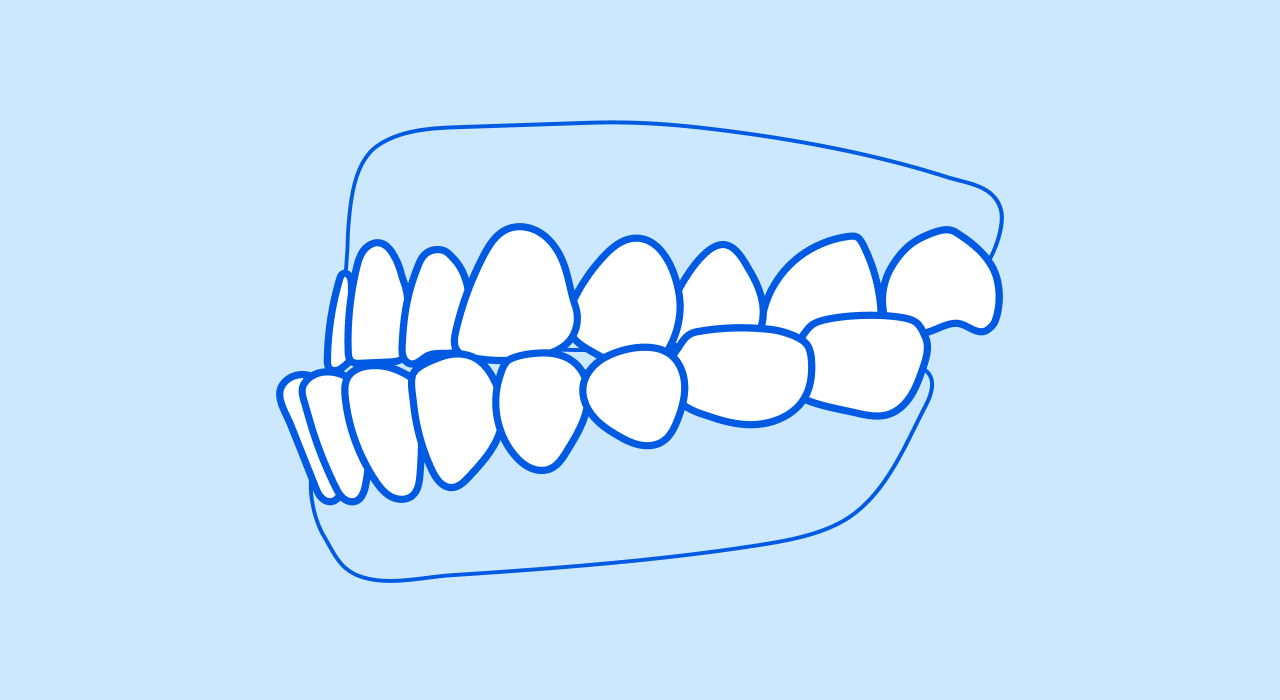Curious on what is underbite?
Underbite is a type of malocclusion (improper bite) where your lower front teeth protrude beyond your upper front teeth. While a mild underbite may not cause any teething issues (pun intended), it may affect your oral health. Let’s dive in to learn more about underbites and what we can do to treat this teeth condition!
Understanding underbite teeth and its implications
Underbites come in different forms, with their severity varying from mild to more pronounced cases. The primary cause is a misalignment of the upper and lower jaws, where the lower teeth protrude beyond the upper teeth. Left untreated, underbites can lead to various complications, affecting not only oral health but also your overall well-being.
While mild cases may not cause significant problems, severe underbite can often lead to various functional and aesthetic concerns. That’s why early intervention is important to prevent it from getting worse.
Underbite vs Overbite: The difference
The way that the teeth overlap determines whether an underbite or an overbite. When the mouth is closed, the lower teeth sit in front of the upper teeth due to an underbite, which is caused by the lower jaw projecting forward. On the other hand, an overbite occurs when the lower front teeth are partially or completely covered when the mouth is closed due to the upper front teeth overlapping them vertically.
Want to know about your current teeth condition?
Common Symptoms of Underbite:
It is essential to recognize the symptoms of an underbite to facilitate timely intervention. Identifying these signs encourages individuals to seek professional assessment and intervention in order to address the root cause. Several indicators that may aid in identifying an underbite include:
- Visible protrusion of the lower jaw: This presents the most noticeable indication of an underbite, impacting facial aesthetics.
- Difficulty chewing and biting: The misalignment in the bite poses a challenge to proper food chewing, potentially resulting in inefficient breakdown.
- Speech difficulties: Underbites can influence speech patterns, leading to issues like lisping or slurring.
- Jaw pain and discomfort: The misalignment places stress on the jaw muscles and joints, causing pain and discomfort.
- Trouble closing or opening the mouth fully: In severe instances, there may be restrictions in the full range of jaw movement.
- Biting the inside of the cheek or tongue: Misaligned teeth heighten the risk of unintentionally biting the soft tissues inside the mouth.
- Facial asymmetry: Over time, an underbite can modify facial features, including a shorter upper jaw and a more prominent chin.
Effects of underbite:
Neglected underbites may give rise to various complications impacting both oral health and overall well-being. Correcting underbite at an early stage can help prevent effects such as:
- Increased risk of tooth decay and gum disease: The misaligned teeth can be harder to clean properly, increasing the risk of cavities and gum inflammation.
- Temporomandibular joint disorder (TMJ): The misalignment can strain the jaw joint and cause pain or discomfort leading to TMJ pain, headaches, and earaches.
- Wear on teeth: Underbite tends to have a wear effect on the teeth. It can cause asymmetrical wear on teeth that increases the likelihood of dental issues like cavities and gum disease.
- Sleep apnea: In severe cases, the underbite can contribute to sleep apnea by obstructing the airway to cause breathing difficulties during sleep.
- Low self-esteem and social anxiety: The aesthetic concerns associated with underbites can affect self-confidence and social interactions.
Understanding these complications underscores the importance of early intervention and corrective measures like underbite braces to prevent the progression of these issues.
How to fix underbite through braces treatment?
A common and effective way of correcting underbite is through braces methods. This can range from traditional metal braces to more discreet options like clear aligners. It’s important to note that correcting underbite through braces depends on various factors, and it is recommended to consult with a dental professional.
Zenyum Invisible braces is an orthodontic method that is used by dental experts to help align teeth for a better smile. It features a set of fully customized invisible braces that are crafted with the aid of dental experts to snugly fit into your teeth.

Based on the severity of the underbite condition, Zenyum invisible braces can be used to correct teeth alignment. Through gradual application of pressure, Zenyum invisible braces enable teeth movement over a period of time based on the severity of the teeth condition.
Get your teeth straightened with Zenyum
Align your teeth today for a better smile tomorrow!

FAQs on Underbite:
Can you fix an underbite without braces?
While mild underbites may be addressed with Invisible Braces, it’s always best to consult a trusted expert to determine the most suitable treatment plan for your specific teeth condition.
How long do you have to wear braces for an underbite?
The duration of underbite treatment with Invisible Braces varies depending on the severity of the case. While mild cases might require you to wear Zenyum invisible braces for around 3 months onwards, more severe cases can take close to 15 months.




